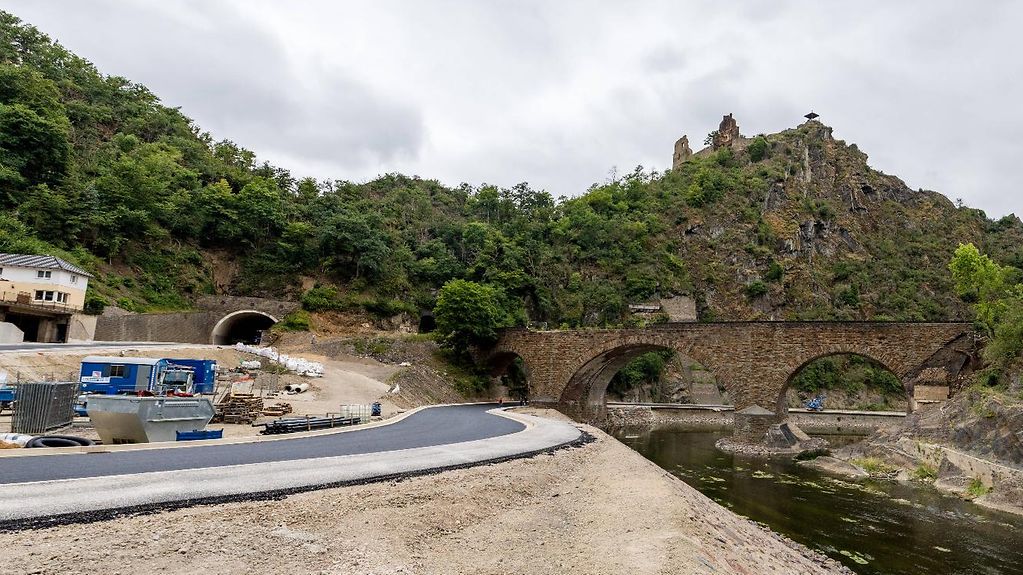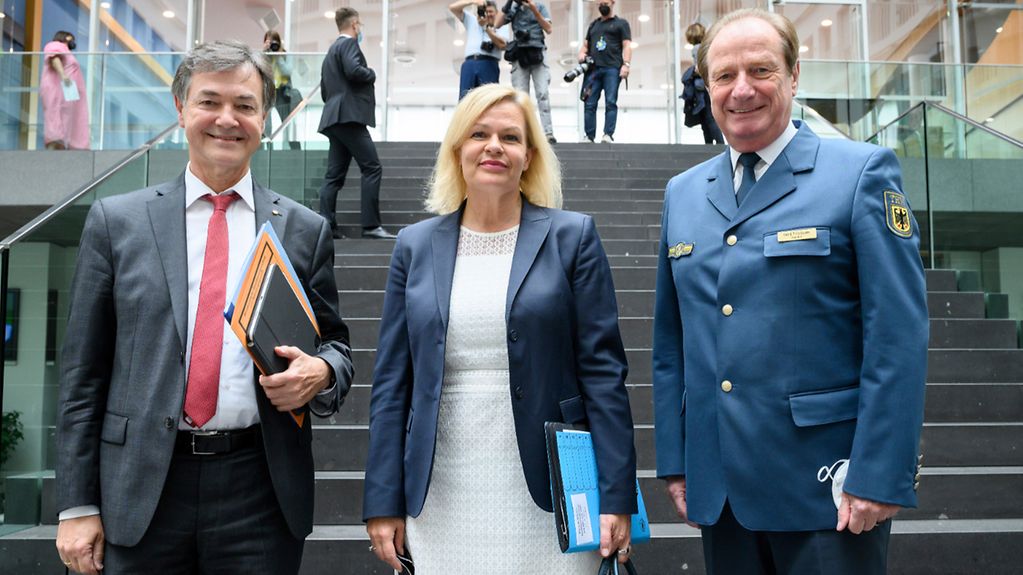Making Germany crisis-proof
The Federal Cabinet has adopted the German Strategy to Strengthen Resilience to Disasters. In addition, Federal Minister of the Interior Faeser presented her programme for a fresh start in the area of civil protection, together with the Federal Office of Civil Protection and the Federal Agency for Technical Relief. “The aim is to make our country more crisis-proof,” she said.
4 min reading time

Reconstructed tunnel road in the Ahr valley: one year after the flood disaster, reconstruction is still ongoing in the region.
Photo: IMAGO/Marc John
The experience of recent years has shown how important it is for Germany to ensure that its local communities, fundamental resources and utility services are more resilient to the impact of disasters – this is something that has emerged particularly from the pandemic, the flood disaster of July 2021 and Russia’s war of aggression against Ukraine in violation of international law.
For the first time, the German Strategy for Strengthening Resilience to Disasters establishes a common strategic framework for increasing resilience to disasters. It was adopted by the Federal Cabinet on Wednesday. In order to adequately counter existing and future risks in the future, risk and crisis management at the level of the Federal Government and Länder has to be better coordinated and perceived as an ongoing assignment across all policy areas.
Disaster prevention, management and follow-up
In addition, the strategy contains cross-sectoral measures for disaster prevention, preparation, management and follow-up. This concerns the entire Federal Government risk management approach so as to be better prepared for crises in the future and be able to recover from them more quickly.
Germany also stands firmly alongside its partners as part of the worldwide community and meets its global responsibilities: the new resilience strategy is based on the United Nations Sendai Framework for Disaster Risk Reduction and other global agreements such as the 2030 Agenda and the Paris Climate Agreement.
In Germany, civil protection is based on an integrated system of assistance provided by municipalities, the Federal Government and the Länder, which provides a very sound basis for building resilience. Numerous actors work together to form an efficient hazard prevention chain, including authorities, fire brigades, relief organisations and the Federal Agency for Technical Relief. Civil protection is firmly anchored in German society, with 1.7 million emergency workers, most of whom are volunteers. The Federal Government thanks them for their commitment.
Better coordination of action at the level of Federal Government, Länder and municipalities
The Programme for a Fresh Start in Civil Protection aims to strengthen cooperation between the Federal Government, the Länder and the municipalities, as well as enhancing Germany’s overall crisis resilience. Federal Minister of the Interior Nancy Faeser presented this on Wednesday, together with the President of the Federal Office of Civil Protection and Disaster Assistance (BBK), Ralph Tiesler, and the President of the Federal Agency for Technical Relief (THW), Gerd Friedsam.
“We need a fresh start in the area of civil protection. The aim is to make our country more crisis-proof. It's crucial for us to ensure much better coordination between the Federal Government, the Länder and the municipalities than was the case previously – especially during the terrible flood disaster a year ago,” said Faeser. She stressed that every effort must now be made to make up for the major omissions of the past years and decades.

Federal Minister of the Interior Faeser presented the programme together with the President of the Office of Civil Protection and Disaster Assistance Tiesler (l.) and the President of the Federal Agency for Technical Relief Friedsam.
Photo: picture alliance/dpa
Modern warning systems are an important aspect
In the view of the Federal Minister of the Interior, important aspects particularly include modern warning systems such as cell broadcast, i.e. targeted warnings sent directly to mobile phones, as well as the clustering of all crisis-relevant information in the newly founded Joint Competence Centre for Civil Protection. Here, all actors from the Federal Government, the Länder and the aid organisations will now come together at one table, unlike previously. Faeser also mentioned that new emergency tent cities were to be procured, each of which could be used to set up sleeping facilities, healthcare, electricity, water and mobility for up to 5,000 people in a very short time.
The concrete measures for the fresh start in civil protection are based on four guiding principles:
- We must always be prepared.
- We need to have an early warning system.
- We must act efficiently.
- We must learn from crises and jointly tackle post-disaster reconstruction.
“One particular priority is the protection of our critical infrastructures, such as energy and healthcare,” said Federal Minister of the Interior Faeser. She announced that she would present cornerstones for an umbrella law on critical infrastructure before the end of this year.
In addition, Faeser is seeking to instigate a Civil Protection Day from 2023 onwards so as to do more to actively involve the population in crisis preparation and promote protective measures undertaken by the state – as well as providing information on precautions that everyone can take themselves.